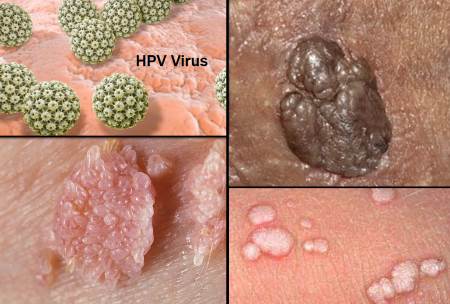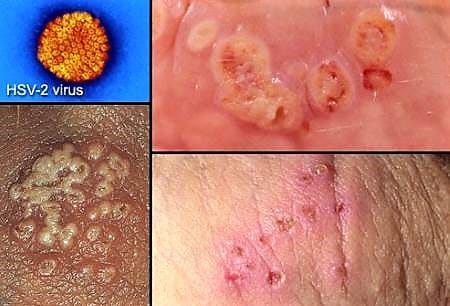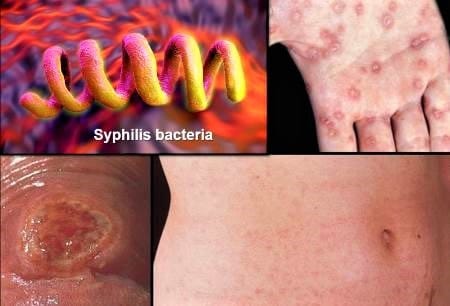Sexually Transmitted Diseases (STDs) Symptoms, Causes, Types and Precautions
What are Sexually Transmitted Diseases (STDs)?
Sexually transmitted diseases (STDs), also known as sexually transmitted infections (STIs), are infections spread through sexual contact, including vaginal, anal, and oral sex. These infections are caused by bacteria, viruses, or parasites and can significantly impact an individual’s health if left untreated. STDs are one of the most common health issues worldwide, with millions of new cases reported each year, particularly among young adults.
In this article, we will explore the various symptoms, types, and precautionary measures associated with STDs. It’s crucial to understand these diseases to safeguard your health and well-being, especially in a country like India and Pakistan where awareness on sexual health is still limited.
How Are Sexually Transmitted Diseases (STDs) Transmitted?
STDs are primarily transmitted through unprotected sexual contact, which can include vaginal, anal, or oral sex. In some cases, the infection can spread through skin-to-skin contact with infected areas. Additionally, certain STDs can be transmitted through sharing needles, during childbirth, or through breastfeeding.
It’s important to note that a person with an STD may not always exhibit symptoms, making it possible to transmit the infection to others without realizing it. This is why regular testing and protected sexual practices are key to preventing the spread of STDs.
Causes of Sexually Transmitted Diseases (STDs)
STDs are caused by a variety of pathogens, including:
- Bacteria: STDs like chlamydia, gonorrhea, and syphilis are bacterial infections that can be treated and cured with antibiotics if caught early.
- Viruses: Viral STDs, such as HIV, herpes, and human papillomavirus (HPV), cannot be cured, but their symptoms can be managed with medication.
- Parasites: Trichomoniasis is a parasitic infection that can be transmitted through sexual contact and is treatable with medication.
Common Symptoms of Sexually Transmitted Diseases (STDs)
The symptoms of STDs vary depending on the specific infection. Some people may not experience any symptoms at all, making regular screenings vital for sexually active individuals. However, when symptoms do appear, they often affect the genital area. Below are some common symptoms for both men and women:
STD Symptoms in Men
- Burning or itching sensation in the penis
- Discharge from the penis
- Pelvic pain
- Sores, bumps, or blisters on the penis, anus, or mouth
- Painful urination or bowel movements
- Frequent urination
STD Symptoms in Women
- Vaginal burning or itching
- Unusual vaginal discharge or odor
- Pelvic pain
- Abnormal vaginal bleeding
- Pain during sexual intercourse
- Sores, bumps, or blisters in the vaginal, anal, or oral areas
- Painful urination or bowel movements
- Frequent urination
When Do STD Symptoms Typically Appear?
The time frame for symptoms to appear after infection can vary widely. Some STDs may cause symptoms within days, while others may take months or even years to manifest. In many cases, individuals remain asymptomatic, which increases the risk of unknowingly spreading the infection to others. If you suspect you might have been exposed to an STD, it’s important to get tested even if you feel fine.
Precautions to Protect Against STDs
Preventing STDs is essential for maintaining sexual health. The following steps can help reduce the risk of contracting or spreading STDs:
- Practice Monogamy: Having a mutually monogamous relationship with an uninfected partner can significantly reduce the risk of STDs.
- Use Condoms: Correct and consistent use of latex condoms during sexual activity reduces the risk of many STDs. Female condoms and spermicides are also options.
- Avoid Sharing Needles: Intravenous drug users should always use sterile needles to avoid infections like HIV and hepatitis.
- Regular Testing: Routine screening for STDs is crucial, especially for sexually active individuals with multiple partners.
- Delay Sexual Activity: The younger a person begins sexual activity, the higher the risk of contracting an STD.
- Avoid Douching: Douching can disrupt the natural balance of bacteria in the vagina, increasing the risk of infection.
- Know the Symptoms: Being aware of the symptoms of STDs can help in early diagnosis and treatment.
The Limitations of Condoms
While condoms are effective in reducing the transmission of many STDs, they are not foolproof. For example, condoms offer good protection against infections like gonorrhea, chlamydia, HIV, and trichomoniasis. However, they may be less effective against skin-to-skin transmitted STDs, such as herpes, syphilis, and genital warts, as these infections can spread through areas not covered by a condom.
What to Do If Diagnosed with an STD
If you are diagnosed with an STD, prompt action is crucial. Follow these steps to protect your health and that of your partners:
- Start Treatment Immediately: Follow your doctor’s instructions and complete the full course of medication.
- Avoid Sexual Activity: Refrain from sexual contact until you and your partner have completed treatment.
- Inform Your Partners: Notify any recent sexual partners so they can also get tested and treated if necessary.
- Follow-Up Testing: Ensure you undergo follow-up tests to confirm that the infection has been successfully treated.
Impact of STDs on Pregnancy
STDs can have serious consequences during pregnancy, affecting both the mother and the baby. Some STDs, like gonorrhea and chlamydia, can cause complications such as premature birth, low birth weight, and eye infections in newborns. Syphilis can lead to miscarriage, stillbirth, or severe health issues in the baby, while HIV can be transmitted to the baby during childbirth or breastfeeding.
Pregnant women should inform their healthcare provider if they suspect an STD. Many STDs can be tested and treated during pregnancy to reduce the risk to the baby.
Common Types of STDs
Here is an overview of some of the most common STDs:
1. Human Immunodeficiency Virus (HIV)
HIV is a virus that targets the immune system, specifically the CD4 cells (T cells), which help the body fight infections. As the virus destroys these cells, the immune system weakens, making the individual more susceptible to infections and diseases. Without treatment, HIV can progress to acquired immunodeficiency syndrome (AIDS), a life-threatening condition.
HIV is primarily transmitted through unprotected sexual contact, sharing contaminated needles, or from an infected mother to her baby during childbirth or breastfeeding. While there is no cure, antiretroviral therapy (ART) can effectively manage the virus, allowing people with HIV to lead long and healthy lives. For more information, read “HIV / AIDS: Symptoms, Diagnosis, Treatment, and Prevention.”

2. Human Papillomavirus (HPV)
HPV is the most common sexually transmitted infection, with many different strains. Some strains cause genital warts, while others are linked to cancers, particularly cervical cancer in women. Many people with HPV do not show any symptoms, and the infection often resolves on its own. However, in some cases, the virus can persist and cause serious health issues.
The HPV vaccine is highly effective in preventing infections caused by high-risk strains of the virus, especially when administered before individuals become sexually active. Routine Pap tests are recommended for women to detect any early signs of cervical cancer linked to HPV. For more details, see “Human Papillomavirus (HPV) Infection: Symptoms and Prevention.”
3. Chlamydia
Chlamydia is a bacterial infection that affects the genital tract. It is one of the most common STDs, especially among young adults. Many people with chlamydia do not experience symptoms, which makes regular screening important. When symptoms do occur, they may include abnormal discharge, pain during urination, or pain during intercourse.
If left untreated, chlamydia can lead to serious complications, including pelvic inflammatory disease (PID) in women, which can cause infertility. Fortunately, chlamydia is easily treated with antibiotics. For more details, see “Chlamydia: Causes, Symptoms, Treatment & Prevention.”

4. Genital Herpes
Genital herpes is caused by the herpes simplex virus (HSV), which exists in two forms: HSV-1 and HSV-2. HSV-1 is commonly associated with oral herpes (cold sores), while HSV-2 typically causes genital herpes. This viral infection leads to painful sores or blisters around the genital or rectal area.
Herpes can be transmitted through direct skin-to-skin contact, even when there are no visible sores. While there is no cure, antiviral medications can reduce the severity and frequency of outbreaks and minimize the risk of transmission to others. Learn more about it here: “Genital Herpes: Symptoms, Pictures, and Medication.”
5. Gonorrhea
Gonorrhea is a bacterial infection that affects the mucous membranes of the reproductive tract, as well as the throat, eyes, and rectum. Common symptoms include painful urination, abnormal discharge, and pelvic pain in women. Like chlamydia, gonorrhea can often go unnoticed, especially in women.
If untreated, gonorrhea can lead to complications such as infertility, ectopic pregnancy, and chronic pelvic pain. Antibiotics are effective in treating gonorrhea, but some strains have developed resistance to certain medications, making prompt diagnosis and treatment critical. For more information, see “Gonorrhea: Causes, Symptoms & Treatment.”

6. Syphilis
Syphilis initially presents as a painless sore, typically found on the penis, inside the vagina, or on the surrounding skin of the genital area. If left untreated, syphilis can progress to more severe stages, causing symptoms such as rashes and, over time, serious complications involving the heart and nervous system. Fortunately, syphilis can be effectively treated with antibiotics. However, if a pregnant woman contracts syphilis and does not receive timely treatment, the infection poses significant risks to the baby. The severity of congenital syphilis depends on the duration of the mother’s infection and whether treatment was provided. This condition can result in miscarriage, stillbirth, or the infant’s death shortly after birth. The CDC reports that approximately 2 in 5 infants born to mothers with untreated syphilis may be stillborn or die from the infection shortly after birth.
FAQs About STDs
1. Can STDs affect fertility?
Yes, certain STDs, such as chlamydia and gonorrhea, if left untreated, can lead to complications like pelvic inflammatory disease (PID) in women, which can cause infertility. In men, untreated STDs can affect the reproductive organs and lead to infertility.
2. Are STDs only transmitted through sexual intercourse?
No, while sexual intercourse is the most common way STDs spread, some can be transmitted through non-sexual means, such as sharing needles (HIV, hepatitis B) or from mother to child during pregnancy, childbirth, or breastfeeding (HIV, syphilis).
3. Can STDs be cured?
Many bacterial STDs, such as chlamydia, gonorrhea, and syphilis, can be cured with antibiotics if treated early. However, viral STDs, such as herpes, HIV, and HPV, have no cure but can be managed with medication to reduce symptoms and transmission risk.
4. Can I get the same STD more than once?
Yes, having an STD does not make you immune. For example, infections like chlamydia and gonorrhea can be contracted multiple times if exposed again, even if you have been treated in the past.
5. Can oral sex transmit STDs?
Yes, STDs like herpes, gonorrhea, syphilis, and HPV can be transmitted through oral sex. Using protection like condoms or dental dams can reduce the risk, but it doesn’t eliminate it entirely.
6. Is it possible to get an STD from a toilet seat?
No, it’s extremely unlikely to contract an STD from a toilet seat. STDs require direct skin-to-skin contact or the exchange of bodily fluids, and the organisms that cause STDs generally cannot survive long outside the human body.
7. What should I tell my partner if I test positive for an STD?
It’s important to inform your sexual partner(s) if you test positive for an STD so they can get tested and treated if necessary. Open and honest communication is key in preventing the further spread of infections.
8. Is it safe to have sex during treatment for an STD?
It is recommended to abstain from sexual activity while undergoing treatment for an STD. You should wait until both you and your partner(s) have completed treatment and a healthcare provider confirms that the infection has cleared.
9. How often should I get tested for STDs?
How often you should get tested depends on your sexual activity and risk factors. It’s generally recommended for sexually active people to get tested at least once a year, but more frequent testing may be necessary if you have multiple partners or engage in unprotected sex.
Conclusion
Sexually transmitted diseases are a significant public health issue, but many can be prevented, managed, or cured with proper care and attention. Regular screening, using protection during sexual activity, and maintaining open communication with partners are crucial steps toward protecting your sexual health. If you experience any symptoms or believe you may have been exposed to an STD, seek medical advice promptly to prevent complications and promote a healthy life.





